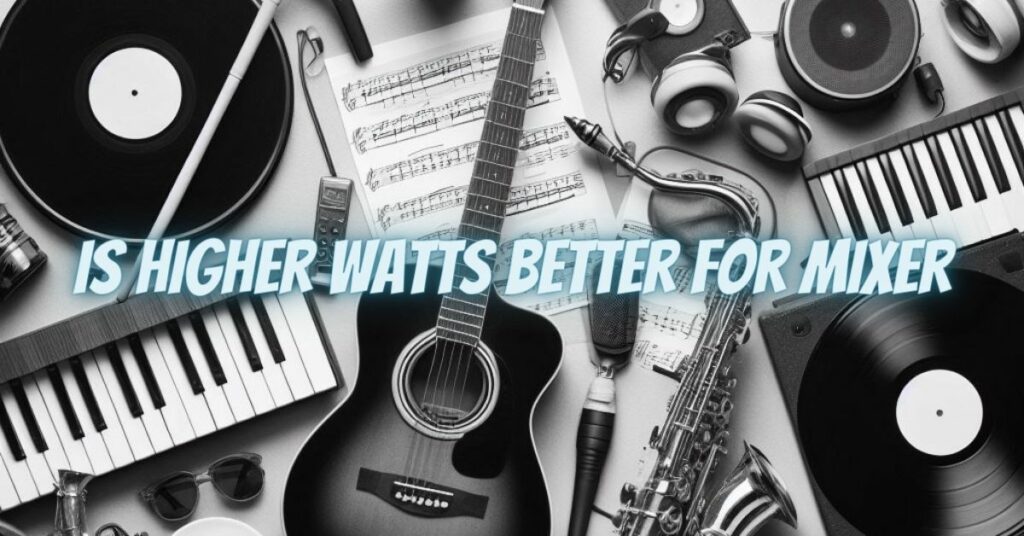Not necessarily. Higher watts does not always mean better sound quality when it comes to mixing mixer audio. In fact, too much power can lead to distortion and other problems.
The most important factor to consider when choosing a mixer for mixing audio is the quality of the preamps and the overall sound quality of the mixer. Preamps are responsible for amplifying the signal from the microphone or other input device. A good preamp will amplify the signal without adding any noise or distortion.
The overall sound quality of the mixer is also important to consider. Some mixers have a warmer, more vintage sound, while others have a more modern, brighter sound. Choose a mixer with a sound quality that you like and that suits the type of music you are mixing.
The power output of the mixer is less important than the quality of the preamps and the overall sound quality of the mixer. However, it is important to make sure that the mixer has enough power to drive your speakers. If you are using powerful speakers, you will need a mixer with enough power to drive them without clipping.
Here are some tips for choosing a mixer for mixing audio:
- Consider the quality of the preamps. The preamps are responsible for amplifying the signal from the microphone or other input device. A good preamp will amplify the signal without adding any noise or distortion.
- Consider the overall sound quality of the mixer. Some mixers have a warmer, more vintage sound, while others have a more modern, brighter sound. Choose a mixer with a sound quality that you like and that suits the type of music you are mixing.
- Make sure that the mixer has enough power to drive your speakers. If you are using powerful speakers, you will need a mixer with enough power to drive them without clipping.
Here are some additional tips for mixing audio:
- Use a good quality mixer. A good quality mixer will have good quality preamps and a good overall sound quality.
- Set the gain levels correctly. The gain levels should be set so that the signal is strong enough to be heard clearly, but not so strong that it clips.
- Use EQ to shape the sound of each instrument or vocal track. EQ can be used to boost or cut certain frequencies to achieve the desired sound.
- Use compression to control the dynamics of the signal. Compression can be used to make the signal more consistent and to reduce the volume range.
- Use effects, such as reverb and delay, to add depth and space to the mix.
By following these tips, you can mix audio like a pro, regardless of the power output of your mixer.


